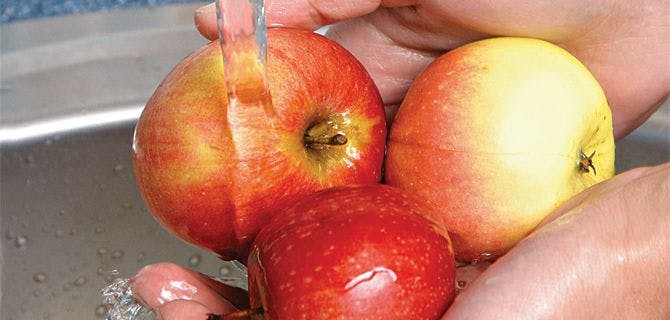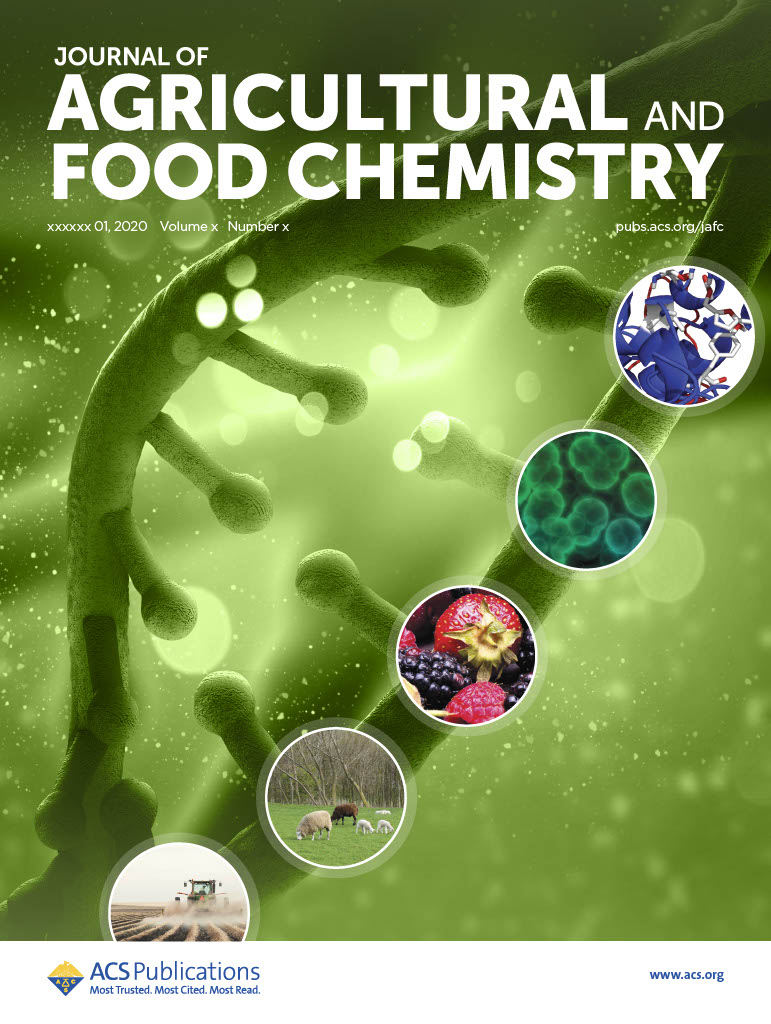Rinsing produce with tap water removes germs and also significantly reduces pesticide residues. But some pesticides persist on produce after getting doused under the faucet, raising health concerns about chronic, low-level exposure to the compounds. A new study finds that a baking soda (sodium bicarbonate) wash can completely remove residues of two pesticides from the […]

Rinsing produce with tap water removes germs and also significantly reduces pesticide residues. But some pesticides persist on produce after getting doused under the faucet, raising health concerns about chronic, low-level exposure to the compounds. A new study finds that a baking soda (sodium bicarbonate) wash can completely remove residues of two pesticides from the surface of apples.
According to the U.S. Department of Agriculture, about 85% of the produce sampled in 2015 had pesticide residues, with apples sporting 16 different ones. In over 99% of the samples, residues were below tolerance limits—the maximum amount of pesticide that can legally remain in or on a particular food—set by the U.S. Environmental Protection Agency, indicating little acute health risk. “However, there isn’t enough information to say for sure whether long-term, low-level consumption of pesticides on produce is safe,” says Lili He, an analytical chemist at the University of Massachusetts, Amherst. Recent studies have linked chronic, low-level pesticide exposure to hyperactivity in children, diabetes, and low sperm counts.
“Washing produce is an easy way to reduce the risk of pesticide exposures,” He says. Because commercial processers wash their fruits and vegetables for two minutes after harvest with a bleach sanitizer to remove dirt and germs, He and her team wondered if the wash might also remove pesticide residues. The scientists compared the efficacy of the germicidal bleach to rinsing with tap water or a sodium bicarbonate solution, which is alkaline. “Most pesticides are not stable at an alkaline pH, which breaks down the compounds and helps to wash them away,” she explains.
The researchers purchased organic Gala apples and applied two common pesticides, the fungicide thiabendazole and the insecticide phosmet, at concentrations used by farmers. After the various washes, He employed surface-enhanced Raman scattering (SERS) to map pesticide residues on the surface of the apples and inside their skins.
Immersing the apples in a sodium bicarbonate solution for 15 minutes followed by a freshwater rinse removed all pesticide residues from the surface of the apples, whereas the tap water and bleach treatments removed some, but not all. Sodium bicarbonate degrades the pesticides, boosting the physical removal force of washing, He says.
The SERS analysis also uncovered some of the pesticides lurking inside the peel. Thiabendazole, designed to absorb into the fruit flesh, penetrated to a depth of 80 µm, four times farther than phosmet, which is designed to remain on the fruit surface. Using a mass spectrometer, the investigators determined that 20% of the applied thiabendazole and 4.4% of the applied phosmet had infiltrated the peel and remained after washing. “This is the first study to provide solid evidence that the farther pesticides penetrate into apples, the harder it is to wash the compounds away,” she contends.
“The study hit two classes of pesticides, a fungicide and an organophosphorus insecticide,” says Jason C. White, an analytical chemist at the Connecticut Agricultural Experiment Station, “but there are probably 50 pesticides labeled for use on apples, and they will be removed at different rates, so more testing is needed.”
Peeling the apples would help remove more of the pesticide residues, but “people would like to eat the peel because it has vitamins,” says Lia A. Stanciu, a materials engineer at Purdue University who makes sensors for detecting pesticides. The methods demonstrated in the study can now be used to look at other cleaning agents that might pull pesticide residues out of the peel. In addition, commercial processors could add sodium bicarbonate to their produce wash to reduce pesticide residues, she says.
This article is reproduced with permission from C&EN (© American Chemical Society). The article was first published on November 3, 2017.
